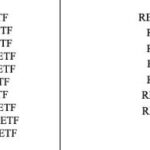In a dramatic turn of events in the cryptocurrency world, a massive liquidation of over 0 million in a long trade on ether (ETH) has sent shockwaves through the Hyperliquid platform. The incident centered around a “whale” wallet, identified as ‘0xf3f4’, which took a highly leveraged 50x long position, using .3 million USDC as margin to control a staggering total of 113,000 ETH. However, things took a turn when the wallet started withdrawing funds, unwittingly lowering the margin below required levels, resulting in a liquidation that cost Hyperliquid’s Hyperliquid Provider (HLP) vault a staggering million.
“There was no protocol exploit or hack,” stated Hyperliquid in response to the speculation swirling among users. The platform clarified that the wallet’s moves were a result of withdrawing funds, which led to a liquidation despite the wallet ending with a profit of approximately .8 million.
This incident has sparked discussions within the community regarding the risks involved in utilizing Hyperliquid’s vault system, a blockchain-based product where users deposit USDC to potentially gain returns based on the trading strategies employed within the vault. Following the liquidation, Hyperliquid reassured users that the system’s historical profit remains robust, resting at around million despite this recent setback.
To mitigate future risks and enhance maintenance margin requirements, Hyperliquid announced adjustments to its maximum leverage, setting new limits of 40x for bitcoin (BTC) and 25x for ETH. This proactive measure aims to prevent similar occurrences that could jeopardize user investments. Interestingly, the incident also caused a brief dip in the platform’s HYPE token, which fell from to below in immediate reactions but later rebounded smoothly, underscoring the market’s capacity for recovery amidst volatility.

The Liquidation Impact on Hyperliquid and Its Users
This article discusses a significant liquidation event involving a long trade on ether (ETH), which not only had financial implications for Hyperliquid but also raised concerns among its users. Here are the key points:
- Massive Trade Liquidation: A 0 million long trade on ETH was liquidated, leading to a million loss for Hyperliquid.
- High Leverage Used: The “whale” utilized a 50x leverage on a position worth .3 million USDC, which resulted in 113,000 ETH being traded.
- Withdrawal of Funds: The user began withdrawing from their margin, which led to not meeting the maintenance requirements for their trade.
- User’s Profit vs Losses: While the user made a .8 million profit through strategic withdrawals, Hyperliquid suffered a million loss, raising concerns about the risk associated with its Hyperliquid Provider (HLP) vault.
- Misunderstanding Among Users: The incident sparked speculation of an exploit or hack, which Hyperliquid firmly denied, clarifying it was a case of user error rather than a breach of security.
“There was no protocol exploit or hack,” Hyperliquid stated, reassuring users about the safety of the platform.
- Preventive Measures: Hyperliquid plans to adjust maximum leverage on BTC and ETH to 40x and 25x respectively to enhance margin requirements and prevent similar situations in the future.
- HLP Vault Stability: Despite the incident, data shows that Hyperliquid’s HLP vault maintains an all-time profit of million, indicating a generally sound strategy.
- Market Reaction: Following the liquidation, the HYPE token initially dropped from to under but has since recovered, showing market resiliency.
These developments indicate the risks involved with high-leverage trading, the importance of understanding margin requirements, and the need for robust safety measures on trading platforms. For readers, especially traders in cryptocurrencies, these events highlight the volatility and risks associated with leveraging trades, as well as the potential for significant market reactions to such incidents.
Analyzing Hyperliquid’s Recent Liquidation Incident in the Crypto Space
The recent liquidation on the Hyperliquid platform, where a whale’s leveraged long position on ether resulted in a significant loss for the HLP vault, highlights both vulnerabilities and competitive facets within the blockchain trading landscape. This incident sheds light on the precariousness of high-leverage trading, as well as the strategies employed by users looking to maximize their profit potential.
Competitive Advantages: One notable advantage Hyperliquid holds is its capacity to attract capital through its Hyperliquid Provider (HLP) vault, which facilitates a unique investment opportunity. Despite the million loss, the vault’s all-time profitability of million signals a successful trading strategy overall, striking a balance between risk and reward. Moreover, their prompt communication dismissing rumors of a protocol exploit demonstrates effective crisis management—reinforcing user trust in an otherwise volatile environment.
Additionally, the decision to reduce maximum leverage limits is a proactive approach to risk management that could deter future speculative activities that endanger user funds. This responsiveness could enhance user confidence and potentially attract traders who seek safer trading conditions without losing sight of profit opportunities.
Competitive Disadvantages: However, this incident also uncovers critical vulnerabilities inherent to Hyperliquid’s operations. The swift drop in the HYPE token value following the liquidation incident suggests investor anxiety around the platform’s stability and highlights a reliance on whale activity for liquidity. Such fluctuations can dissuade less experienced traders who may find the market conditions erratic and intimidating.
This event could serve as a double-edged sword for users and potential investors. While seasoned traders might appreciate the high-risk, high-reward potential that Hyperliquid offers, novice investors or those risk-averse could face detrimental consequences stemming from increased caution or the allure of more stable trading platforms. The need for robust educational resources around leveraged trading strategies is evident, and Hyperliquid’s competitor platforms might seize the opportunity to position themselves as safer alternatives, thus drawing in this cautious clientele.
In summary, while Hyperliquid remains competitive with its profitable strategies and proactive measures, it also faces challenges in user perceptions and market stability that could either fortify its loyal base or invite scrutiny from potential users weighing their options in an increasingly crowded space.

















